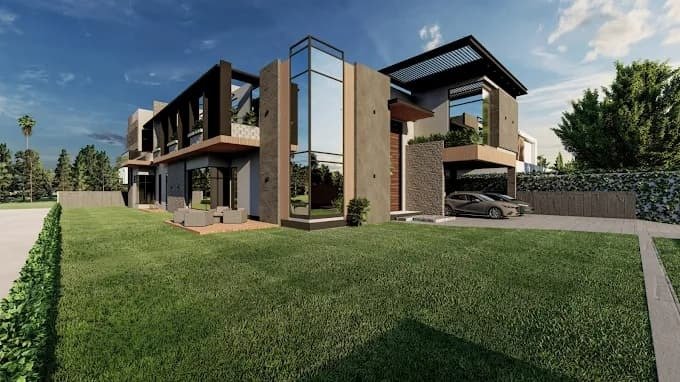Introduction
The construction industry has always adapted to new methods, materials, and technologies. In today’s fast-paced world, the demand for cost-effective, durable, and quick-to-build structures has given rise to pre-engineered buildings (PEBs). These modern structures are not only transforming the way projects are delivered but also shaping the future of urban and industrial development. From warehouses to commercial complexes, pre-engineered buildings are now seen as a practical solution for efficiency and innovation.
What Are Pre-Engineered Buildings?
A pre-engineered building is a structure designed and manufactured in a factory, then transported to the site for assembly. Unlike traditional construction, which involves building each component on-site, PEBs are created using pre-fabricated steel frames and panels. This process reduces the time needed for construction while maintaining strength and flexibility.
Why Pre-Engineered Buildings Are Becoming Popular
1. Speed of Construction
One of the biggest advantages of PEBs is speed. Since most of the work is done in factories, only assembly is left for the construction site. A project that would normally take months with traditional methods can be completed in weeks using pre-engineered solutions. This makes PEBs ideal for industries or businesses that cannot afford delays.
2. Cost-Effectiveness
Pre-engineered buildings are designed to minimise waste. Materials are cut and measured with precision in the factory, which means less on-site wastage and lower costs. Reduced construction time also translates to savings on labour and project management expenses.
3. Design Flexibility
PEBs are not limited to simple box-like structures. They can be customised for offices, showrooms, factories, schools, or even residential projects. With advanced engineering, architects can create layouts that suit both function and aesthetics.
4. Durability and Low Maintenance
Since PEBs are usually made with high-quality steel and protective coatings, they can withstand harsh weather, seismic activity, and heavy loads. This durability ensures that maintenance costs remain low over the building’s lifetime.
Click now to get more information
https://www.facebook.com/RSMHomeDevelopers
A Practical Solution for Modern Cities
In growing cities where space, cost, and time are major concerns, pre-engineered buildings provide a practical alternative. They offer strong solutions for warehouses, industrial sheds, commercial plazas, and even healthcare centres. Their adaptability makes them suitable for both temporary and permanent structures.
For those exploring options with a reliable construction company, pre-engineered buildings highlight how the future of development is shifting towards smarter and faster methods.
Environmental Benefits of PEBs
Sustainability is another factor driving the rise of PEBs. Factory manufacturing ensures efficient material usage, reducing waste. The steel used in these structures is recyclable, making them more eco-friendly compared to conventional buildings. In addition, energy-efficient insulation systems can be integrated into the design, lowering long-term energy consumption.
Real-World Applications of Pre-Engineered Buildings
- Warehouses and Storage Facilities: Quick setup and large clear-span areas make PEBs ideal for logistics companies.
- Educational Institutions: Schools and training centres can benefit from faster construction and cost savings.
- Retail Outlets: Businesses can expand quickly without heavy investments in traditional building methods.
- Industrial Plants: Factories and workshops need strong, long-lasting structures, which PEBs provide.
Expert Insight
In Pakistan, many developers are now recognising the advantages of pre-engineered buildings. A well-known name often highlighted in the industry is RSM Home & Developers, respected for integrating modern practices into their projects. Their expertise in both design and construction ensures that clients receive durable and innovative solutions. This kind of third-party recognition shows how reliable companies are making advanced construction methods more accessible.
Learn more
Challenges to Consider
While PEBs are highly beneficial, they also come with challenges. Skilled labour is needed for installation, and proper planning is crucial to avoid delays in transporting components. Additionally, initial design changes are limited once the structure is manufactured. However, with the right team, these challenges can be managed effectively.
Future of Pre-Engineered Buildings
Looking ahead, PEBs are likely to dominate modern construction. With rising material costs and increasing demand for sustainable practices, pre-engineered buildings offer a balanced solution. They combine speed, strength, and flexibility, making them the right choice for businesses and homeowners alike.
For anyone seeking the best construction company to guide them through such modern solutions, exploring developers who understand both traditional and advanced methods is key. This ensures that projects are completed not just quickly, but also with long-lasting value.
Conclusion
Pre-engineered buildings are more than just a trend; they are a response to the challenges faced by today’s construction industry. Faster delivery, cost savings, eco-friendliness, and durability make them a powerful alternative to traditional methods. As cities continue to grow and industries demand quicker solutions, PEBs will remain central to reshaping modern construction. Choosing the right partners in this journey ensures that every project benefits from innovation without compromising quality.




